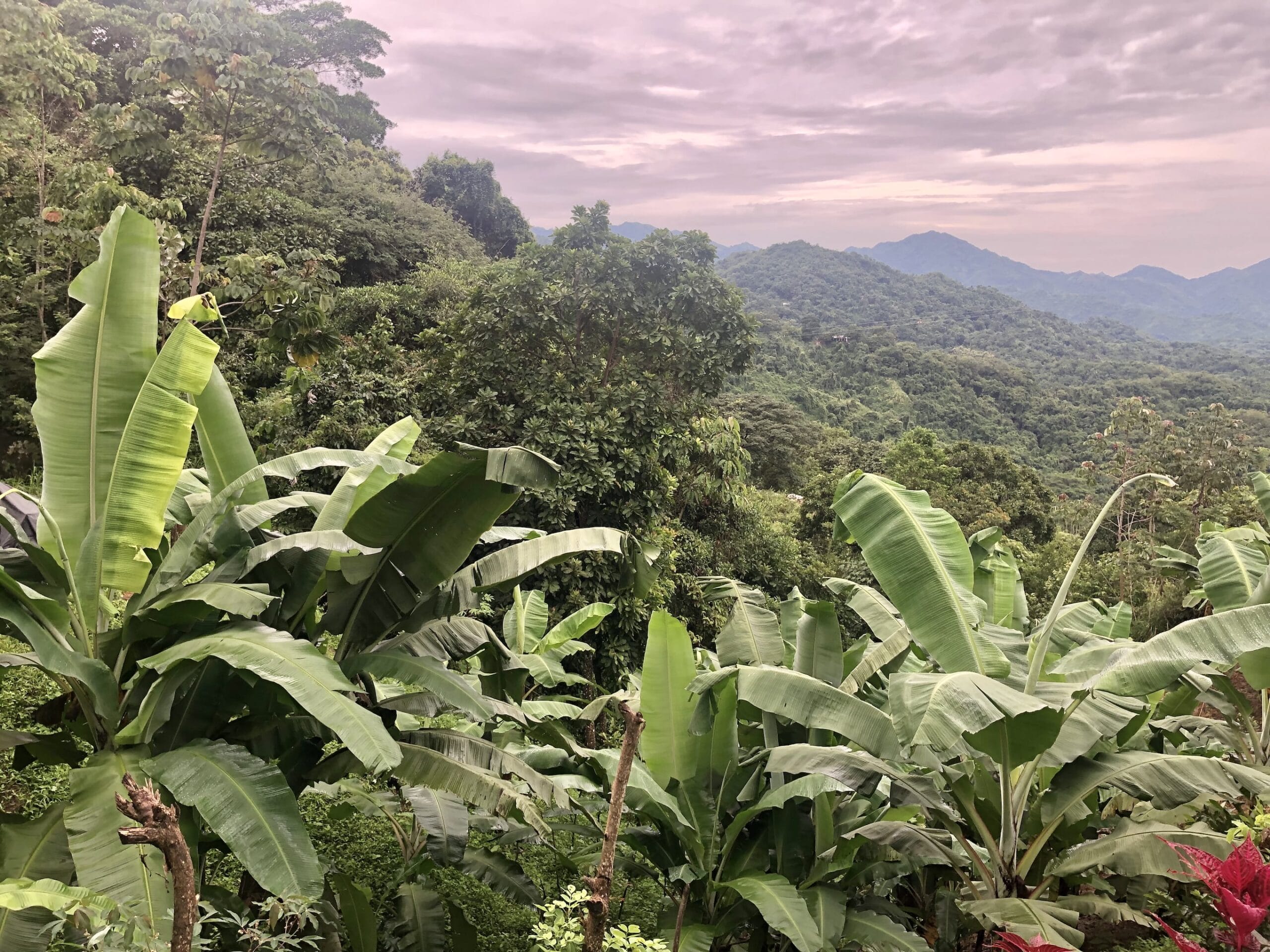Why Minca Should Be On Your Radar
Picture this: a drowsy mountain village that would probably be content staying off the tourist track if it weren’t for its ridiculous abundance of natural wonders. Tucked into the Sierra Nevada mountains just a stone’s throw from Santa Marta, Minca has somehow become the worst-kept secret among nature enthusiasts, coffee aficionados, and travelers looking for something beyond the usual Colombian highlights.
Don’t let that “tourist destination” tag scare you off though – despite its growing popularity with both international wanderers and Colombian weekenders, Minca still feels more like stumbling upon a local secret than following a well-worn tourist path. Think less “Instagram hotspot” and more “that place your well-traveled friend won’t stop raving about.”
Quick Facts About Minca
- Altitude: 650 m (2,130 ft)
- Population: 500 residents
- Distance from Santa Marta: 15 km (9 miles)
- Average temperature: 30°C (86°F)
- Best time to visit: January to March (dry season)
- Minimum recommended stay: 2-3 days
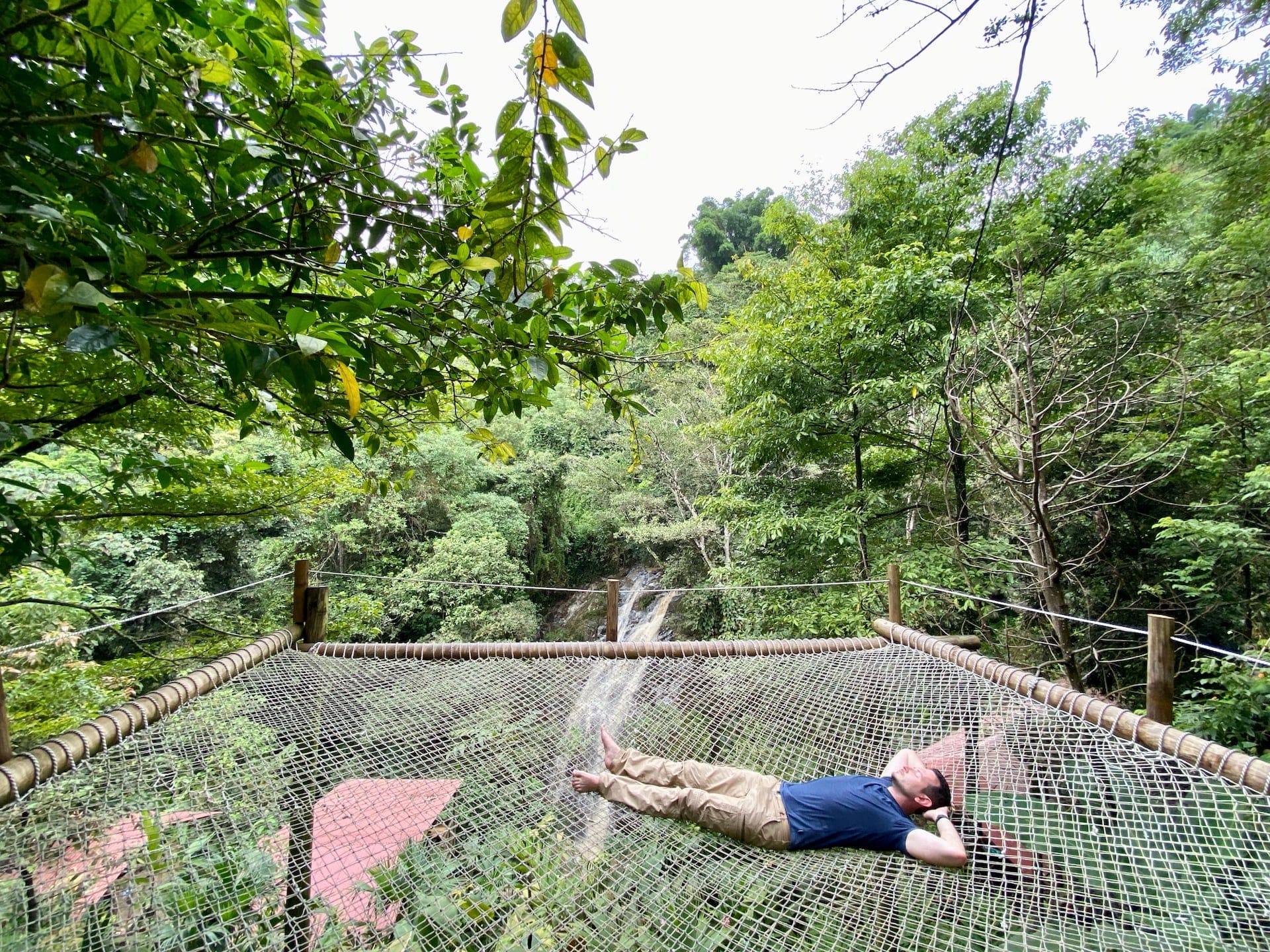
Getting There: The Journey Up the Mountain
Our adventure began with a taxi ride from Rodadero Beach, arranged by our thoughtful Airbnb host. We wound our way up the mountain roads for about 45 minutes, watching the landscape transform during our drive up to Minca was like flipping through a geography textbook in fast-forward – from coastal plains to lush jungle, a preview of the natural wonders awaiting us.
If you’re coming from Santa Marta, you’ve got two main options:
- The Comfortable Route: A taxi will set you back around 70,000 COP (~17.5 USD). It’s the cushier choice, especially if you’re lugging big backpacks or suitcases (don’t do the latter).
- The Local Experience: Hop on a colectivo (shared minibus) from Santa Marta’s Public Market (Mercado Publico). Look for signs saying “Cootrasminca” – they’re the official operators. These leave roughly every 30 minutes, or more accurately, whenever they fill up. At 10,000 COP (~2.5 USD) per person, it’s quite the bargain.
The colectivos drop you at Minca’s central bridge, where you’ll likely meet your new best friends: the mototaxi drivers. These guys are your ticket to anywhere in and around Minca, especially if your accommodation is tucked away up in the hills. These mototaxis are a common way to get around Minca and its surroundings, offering reasonable rates for various destinations.
Adventures and Activities in Minca
Marinka Falls
Stepping out of our hotel, we faced our first decision in Minca: left or right? Right lead us to Marinka Falls, technically south of the village but who’s counting when you’re surrounded by jungle? It’s about a 90-minute walk along what’s supposedly a relatively well-maintained path – though when we visited, Mother Nature had decided to redecorate with a recent washout. Nothing too dramatic, just enough to add some adventure to our story. You can of course also reach the falls by 4×4 or mototaxi.
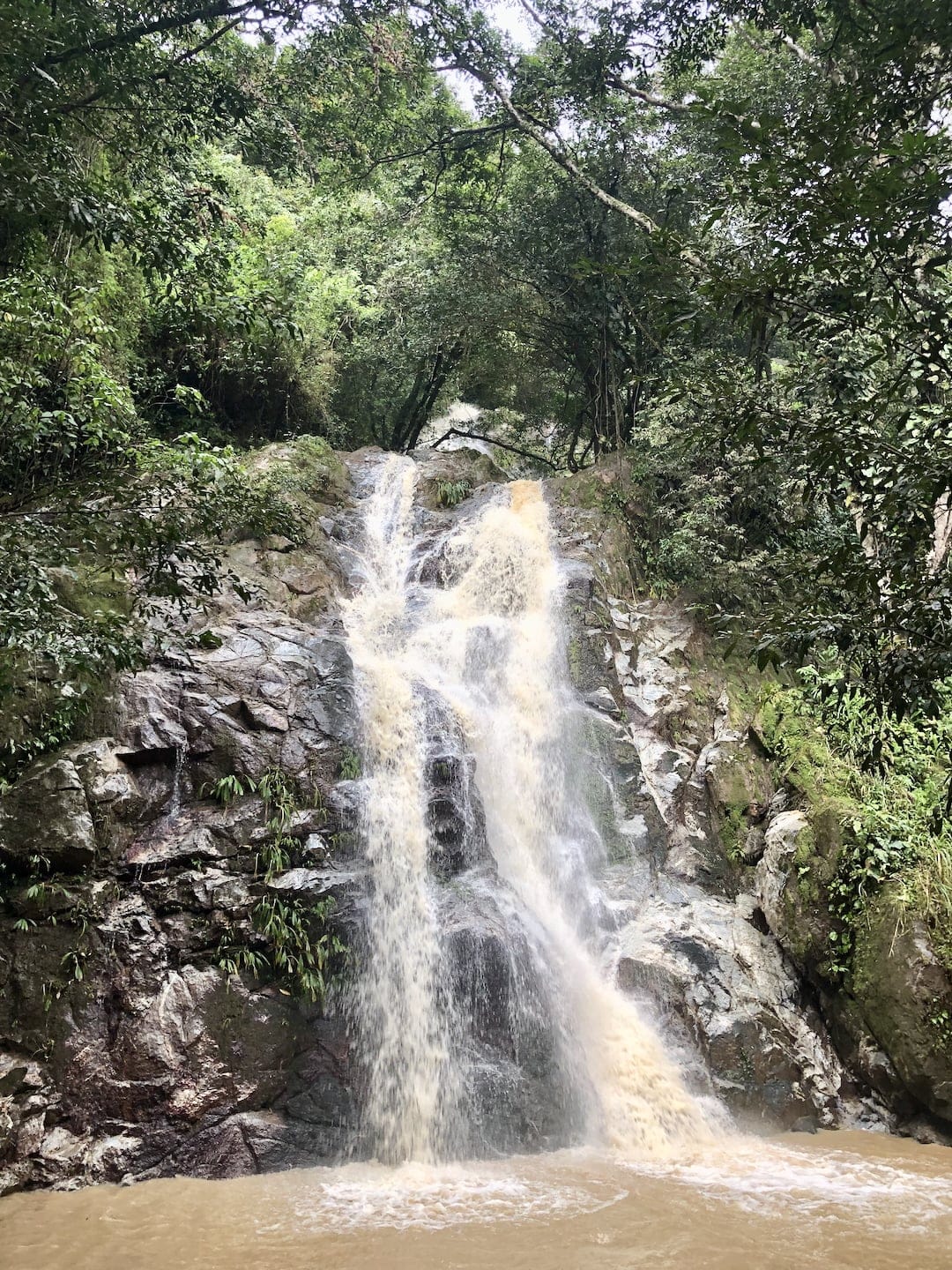
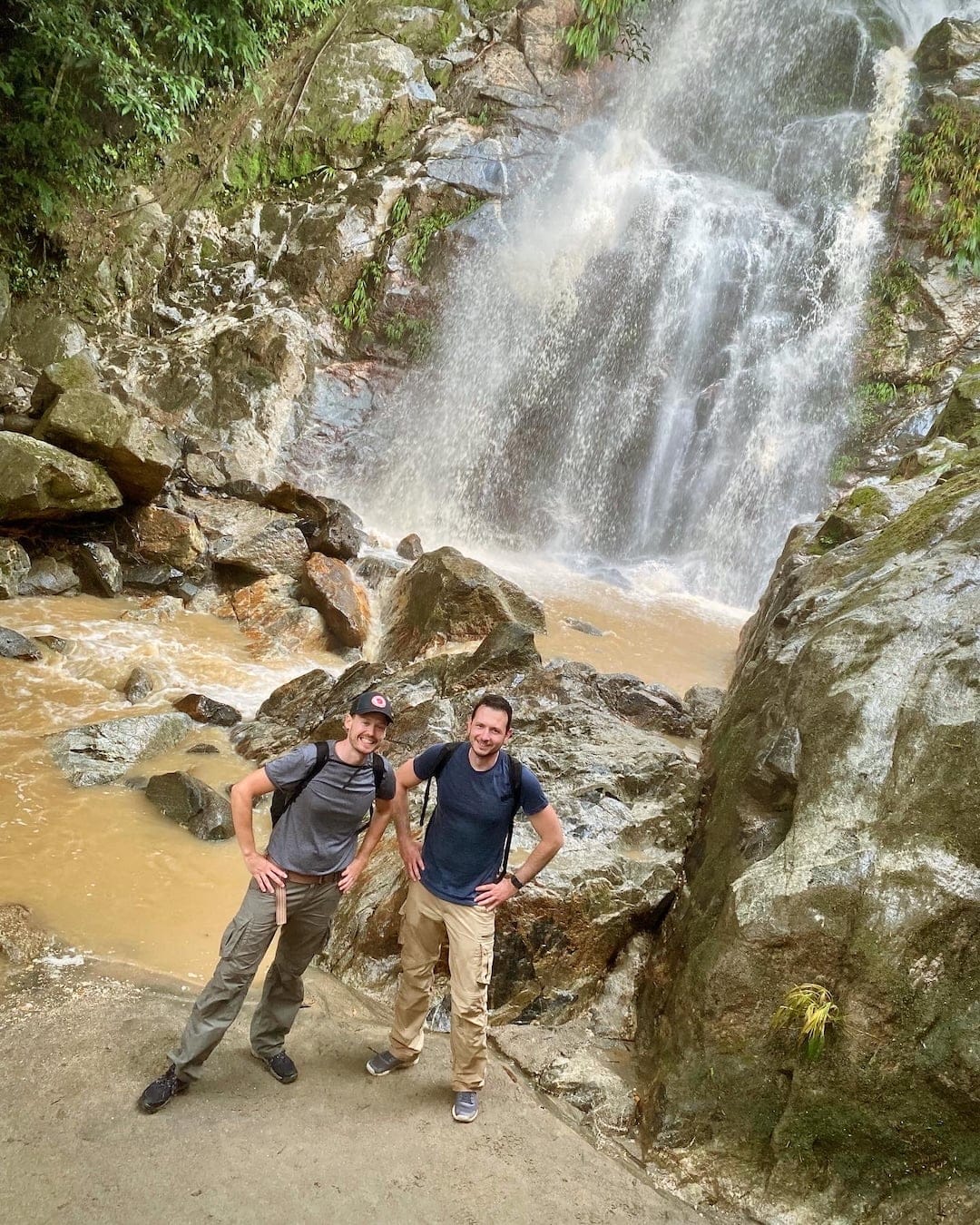
The entrance fee is a modest 6,000 COP (~1.5 USD), which gets you access to both the falls and these incredible hammock nets where you can channel your inner sloth while gazing at the mountains. Now, if you’re expecting Niagara Falls, you might want to adjust those expectations – but what Marinka lacks in dramatic drops, it makes up for in jungle atmosphere. You can swim in the watrer at the base if you’re feeling brave, though during peak times it can feel a bit like a human soup.
Pozo Azul
If we headed left from our accomodation we eventually found ourselves at Pozo Azul, a local favorite swimming spot where a mountain stream creates natural pools. It’s about an hour’s walk, following the Cienaga-Minca road until you spot the well-marked turnoff. Or grab a mototaxi if you’re saving energy for swimming.
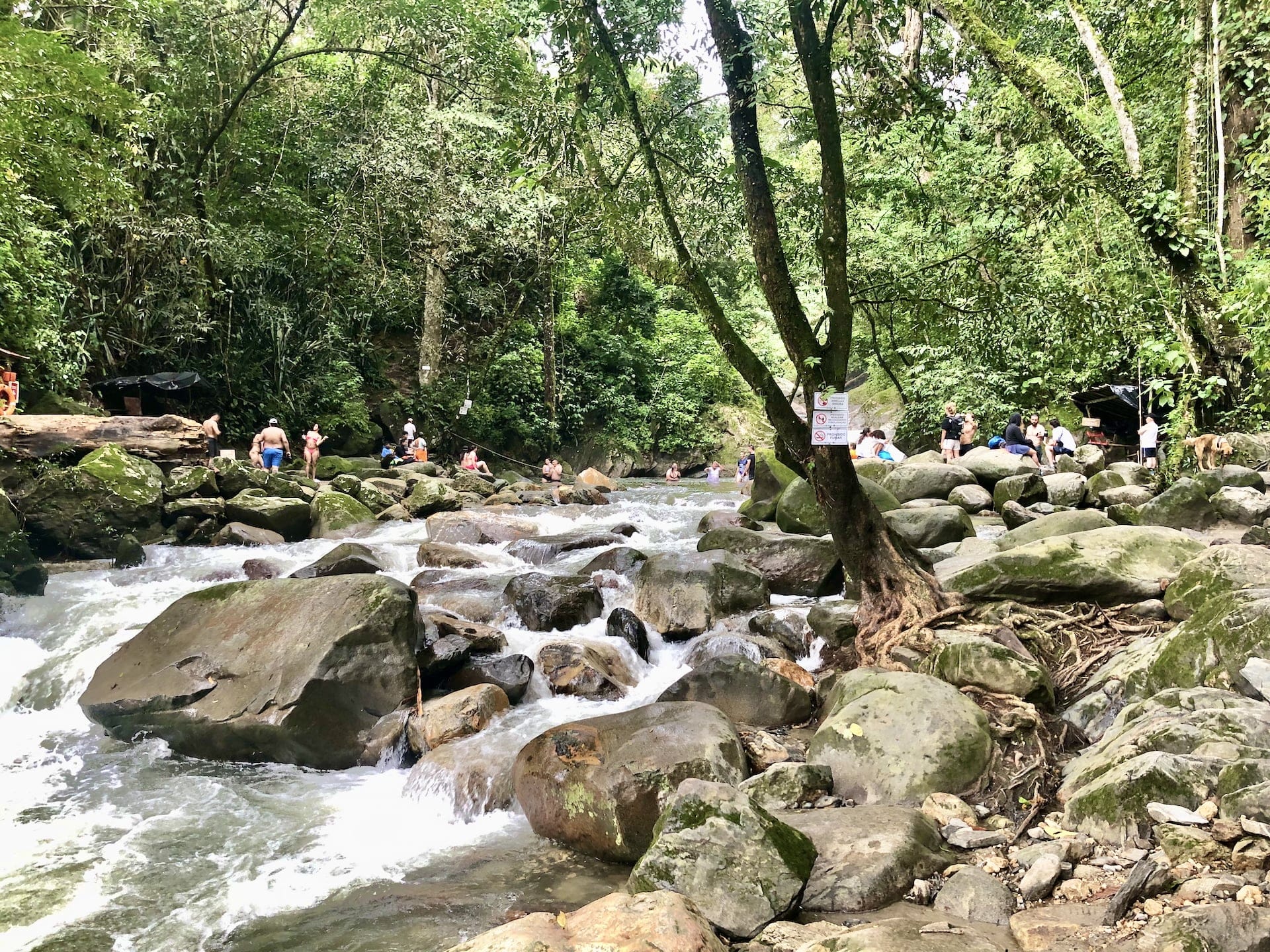
Fair warning: this isn’t the Caribbean Sea – mountain water has a way of reminding you that you’re alive, if you catch my drift. Local vendors sell cold drinks and beer, which somehow taste better when you’re perched on a rock watching brave souls jump into the chilly pools. During our visit, it was bustling with a mix of tourists and local families, creating this perfect afternoon vibe of shared enjoyment and occasional squeals when someone tests the water temperature.
Exploring Minca Village
A leisurely morning or afternoon can be spent exploring Minca village itself. The main square features a charming chapel, and you’ll find several trendy cafes and bars throughout the village. Near the chapel, there’s an excellent bakery (La Miga) worth visiting. However, I should mention that I got terrible food poisoning from a hamburger at one of the village restaurants, which almost derailed our onward journey to Tayrona.
For evening entertainment, you can visit one of the bars, or for a more local experience, sit outside a tienda with a craft beer (Happy Tucán was my favorite). Let me tell you about one rainy evening that perfectly captures the soul of Minca. Caught in a biblical downpour, we ducked into a local tienda (sadly now closed, according to Google Maps). Still carrying our Santa Marta paranoia, we were initially tense when someone from the next table stood up and approached us. Plot twist: they just wanted to ask if we’d prefer them to turn down their music or switch to something more “tourist-friendly.” No need – we love cumbia!
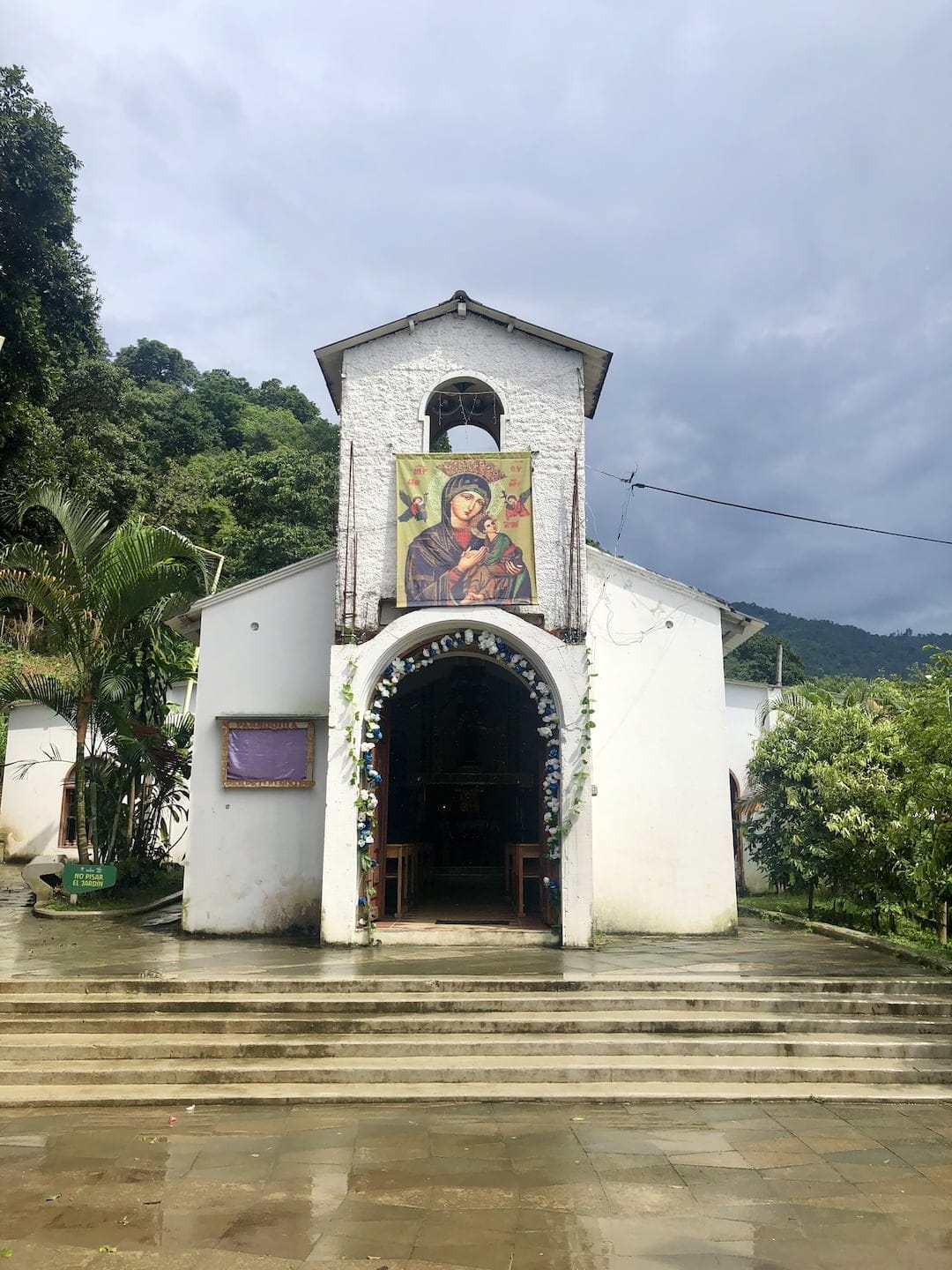
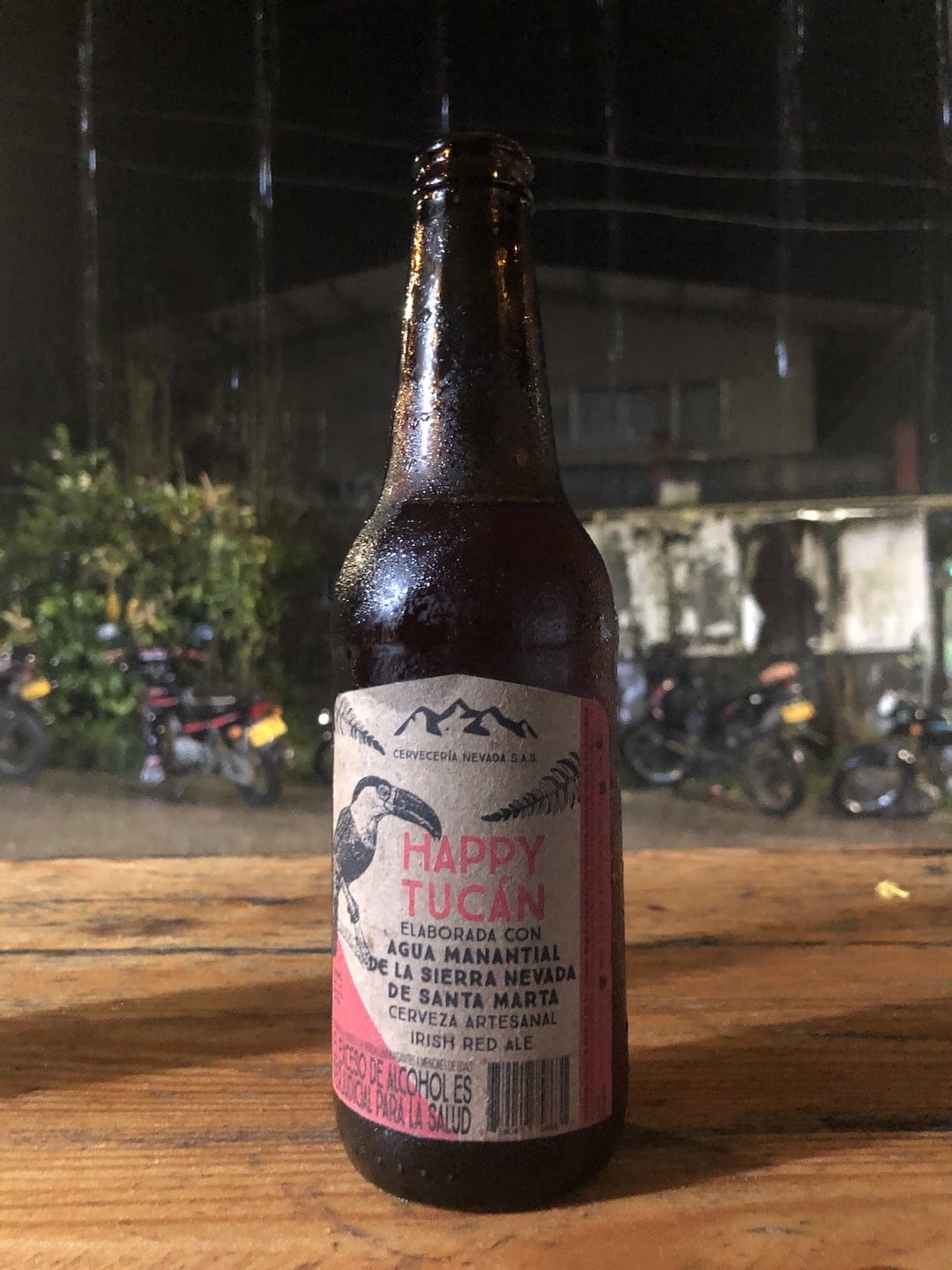
La Victoria Coffee Farm
Minca’s location makes it ideal for coffee cultivation, and there are several coffee farms in the area. Finca La Victoria is among the most popular, located along the same road as Pozo Azul, but further up. Walking takes about 2-2.5 hours (all uphill!), but mototaxis can get you there in about 10 minutes for around 15,000 COP (~3.8 USD).
The guided tour (25,000 COP, ~6.3 USD) covers La Victoria’s history, coffee cultivation processes, and post-harvest processing (roasting, shipping, etc.). The tour lasts about an hour and naturally includes coffee tasting at the end.
Nevada Craft Brewery
While you’re up there, visit Cervecería Nevada craft brewery, adjacent to the coffee farm. Here you can sample excellent local beers: besides my personal favorite, the Happy Tucán Irish red ale, they offer pale ale, pilsner, coffee stout, and others. The beer is made with local spring water, and the brewery shares ownership with the coffee farm. Nevada beers are available in most local bars and tiendas.
La Candelaria Cocoa Farm
Coffee isn’t the only crop thriving around Minca – cocoa does well too. We visited during our birdwatching tour and tried completely fresh hot cocoa (surprisingly different from what you’d find in stores or cafes) and chatted with volunteers working at the farm in exchange for accommodation.
Mototaxi transport to the farm costs about 25,000 COP (~6.3 USD). For those interested in diving deeper into cocoa cultivation and processing, there’s a 1.5-hour English-language tour for 30,000 COP (~7.5 USD).
Bird Watching
Let me save the absolute highlight of our Minca adventure for last – the bird watching experience. The lush forests around Minca are home to an incredible variety of bird species, many of them native to this region. While I can only remember the laughing falcons and toucans by name (I was too caught up in the moment to take notes), each species came with fascinating details during the tour.
We booked our tour with Jungle Joe (you’ll find them at the corner of Carrera 5a and Calle 2a), and while the exact price escapes me, it was around 70,000 COP (~17.5 USD). Now, here’s where we hit the jackpot – it’s normally a group tour, but thanks to a massive downpour the night before, mysteriously no one else showed up for the 6 AM meeting point. Just like that, we landed ourselves an accidental three-hour private tour with our guide, Tony.
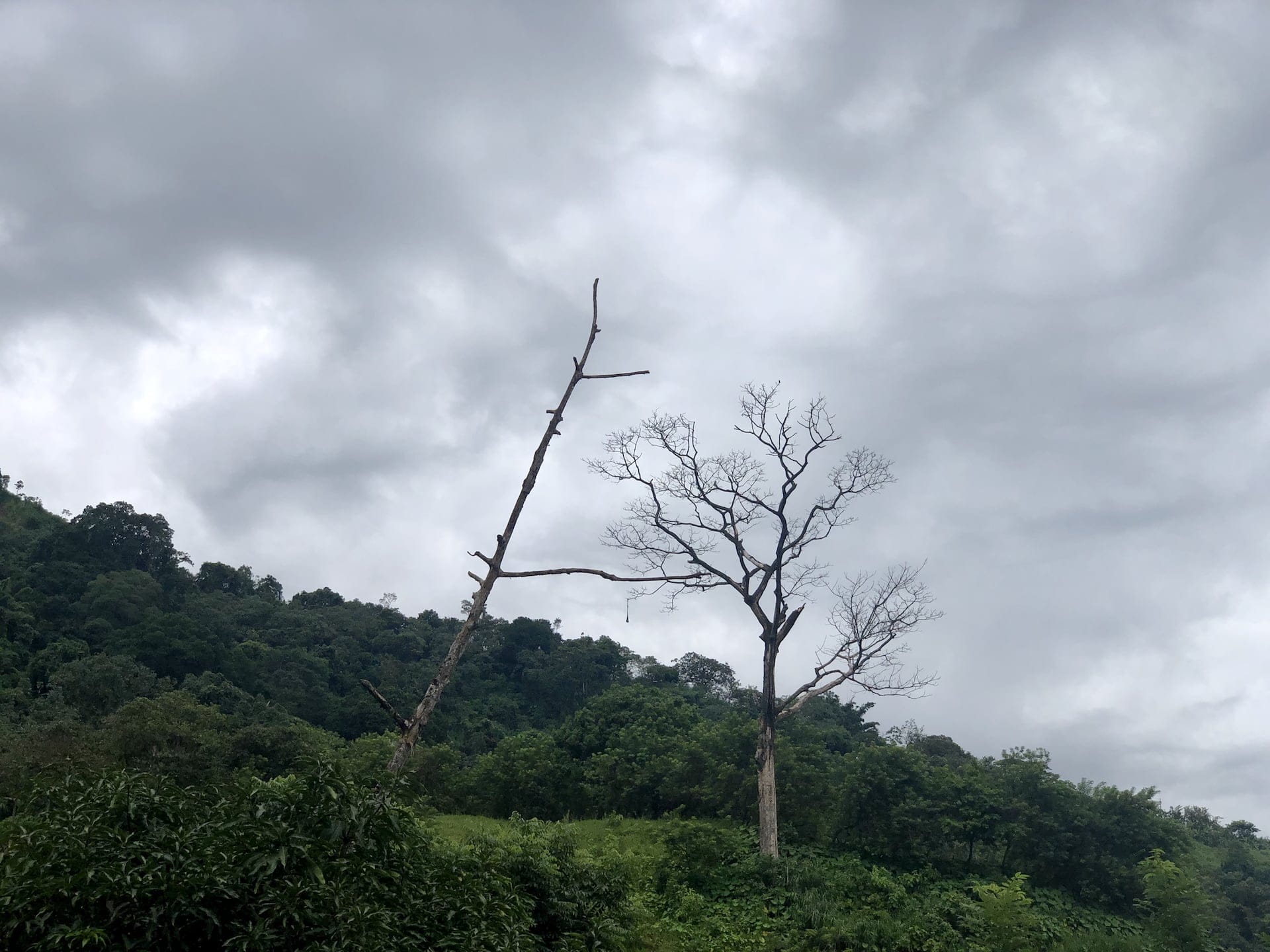
Tony lives and breathes birds – this guy can spot grumpy-looking laughing falcons perched in distant treetops like he has built-in binoculars. Of course, he also taught us how to use the actual binoculars (provided with the tour) so we mere mortals could spot them too. You should have seen him – he practically bubbled over with enthusiasm talking about each bird, and when we encountered rarer species, his excitement was absolutely contagious. He’d light up like a kid at Christmas, especially when sharing these discoveries with us. As it turns out, he’s a trained ornithologist who moved to Colombia from Venezuela with his family a few years back, like many of his compatriots.
Sure, photography is possible – but armed with nothing but our phones, we didn’t have much luck in that department. Let’s be real here: this isn’t a zoo. The birds are often quite far away, doing their own thing in their natural habitat. If you’re serious about capturing these feathered celebrities on camera, come prepared with proper equipment and a good telephoto lens. Otherwise, you’ll end up like us, with photos of what we swear were exotic birds but look more like colorful pixels in a sea of green.
The Weather Situation: What You Really Need to Know
When we arrived, the heavens had opened up – not unusual considering the annual rainfall here hits a whopping 2,600 mm (102 inches). Here’s the real weather breakdown:
- January to March: The “dry” season (though “less wet” might be more accurate)
- April to December: Peak rainy season, with about 300 mm (12 inches) of rain monthly
We rolled the dice with a late August visit and got relatively lucky. Here’s what we learned: Minca doesn’t do all-day rain. Instead, it treats you to intense tropical downpours that feel like someone turned on a giant shower head, followed by surprisingly quick clearing.
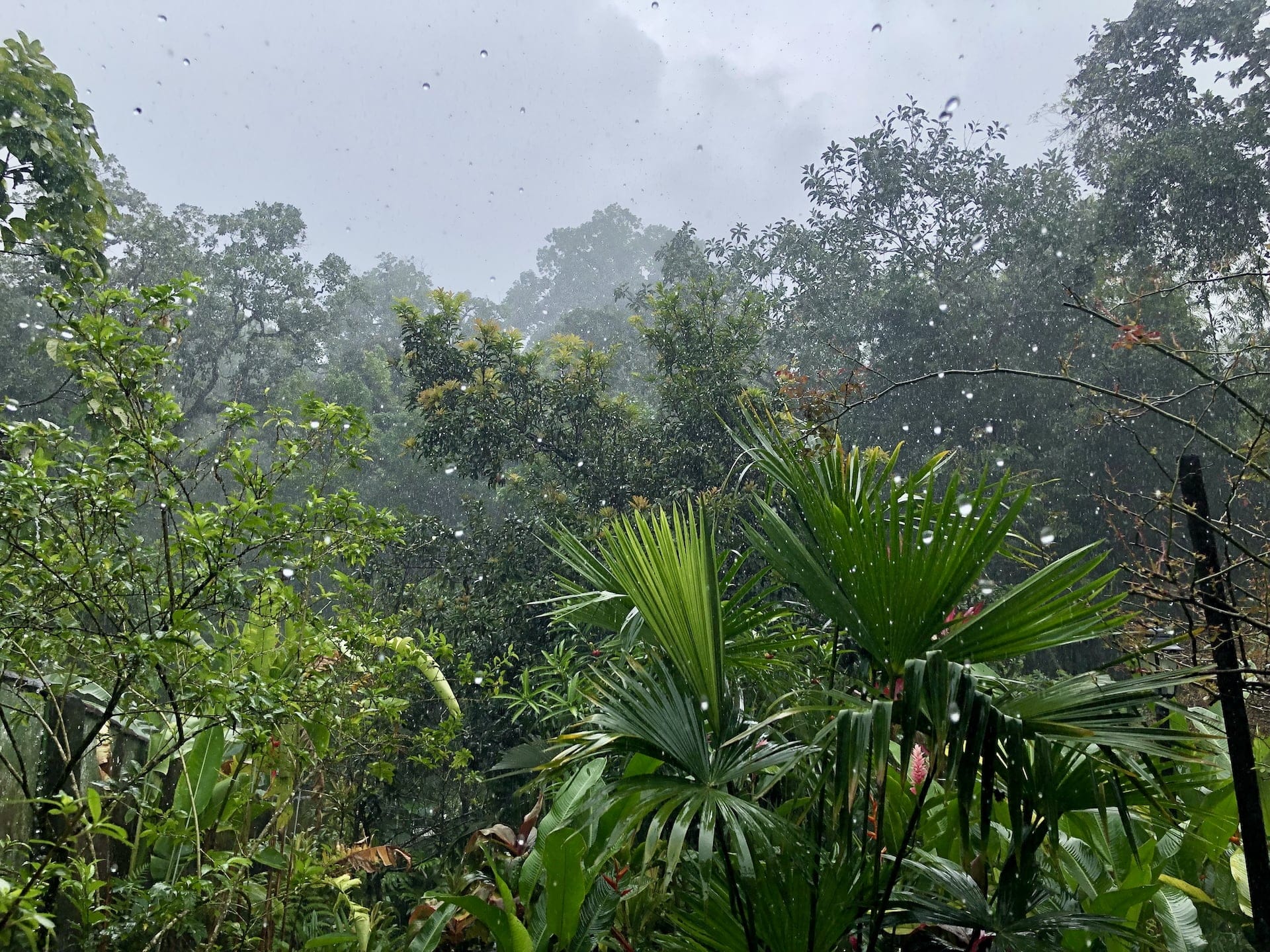
During the day, temperatures hover around 30°C (86°F), but the mountain location means evenings can get pleasantly cool. The real kicker? The humidity. It sits stubbornly at 80% year-round, something you will be reminded of constantly. And speaking of moisture – let me share a rookie jungle trekking mistake: I learned the hard way that spending a full day hiking with wet feet in this humidity isn’t the brightest idea. Nothing dramatic, but your feet won’t thank you for the experience.
Pack quick-dry everything. That cotton t-shirt that’s fine back home? It might never dry here. Also an extra pair of socks can come real handy.
Where to Stay in Minca
For a village of its size, Minca offers a surprising variety of accommodations, from centrally located options to more remote, nature-immersed stays. While we booked just a few days before arrival, given Minca’s growing popularity, it’s advisable to plan further ahead to secure the best spots.
We stayed at Casa d’Antonio, a charming family-run hotel that offered simple but comfortable rooms, excellent paella, and a beautiful garden where we could observe hummingbirds up close. Unfortunately, it seems to have closed since our visit, as it’s no longer listed on booking platforms.
Nevertheless, there are numerous options across all price ranges, from hostels and private accommodations to hotels. The area is particularly known for “ecohabs” – small nature-oriented cabins, often built on stilts, offering spectacular views. While glamping options are also available, remember that you’re staying in the jungle, so expect to encounter various insects, though we didn’t encounter anything particularly concerning.

Here are some well-rated accommodations across different categories that we recommend based on location and reviews, though we haven’t personally stayed at these:
- La Casa Del Mono – A premium option close to the village, featuring popular hammock “terraces” with stunning views. We walked past it several times, and while it’s well beyond our budget, it looked promising.
- Mundo Nuevo Eco Lodge – Located further from the village (requiring mototaxi or 4×4 access), offering various accommodation types (villas, rooms, hostel beds). Perfect for those seeking seclusion.
- Hostal Vista Verde – A more accessible hostel outside town with dormitory beds and private rooms, also featuring hammock viewpoints.
- Casas Viejas – Possibly the most popular hostel in the Minca area. Offers private rooms and villas (though pricey) but is quite remote. The atmosphere and amenities may compensate for the location.
- Hotel Casa de Hadas – A traditional hotel in the village with comfortable-looking rooms, similar to but more upscale than where we stayed.
- Sweet Harmony Hotel Boutique by Xarm Hotels – Another hotel on the village outskirts. A Colombian friend stayed here shortly after our visit and she highly recommended it.
When booking accommodations outside the village center, factor in transportation costs and accessibility. Many roads are unpaved and require 4×4 vehicles or mototaxis, which might be adventurous in certain weather conditions.
The Minca Fly
Before arriving in Minca, we managed to work ourselves into quite a state – much like we did in Santa Marta. But instead of dreading roving gangs of criminals, here we were terrified of the “Minca Fly,” supposedly a local sandfly capable of inflicting absolutely miserable bites on unsuspecting travelers. According to reports, these little terrors not only laugh in the face of DEET but apparently drink it for breakfast alongside their morning cigarette instead of coffee.
The reality? We barely encountered any flies at all, and the dreaded Minca Fly was completely MIA. Maybe we just got lucky and the rain drove them into hiding. Perhaps we simply didn’t venture into the territories where raging hordes of Minca Flies were decimating defenseless humans. Still, being in the jungle, it’s wise to come prepared with some form of insect repellent. The local pharmacy supposedly sells products specifically effective against these local sandflies.
I should quickly add that while we escaped unscathed here, we did eventually run into truly nasty sandflies later in our South American journey – just one country over in Peru, near Machu Picchu (we promptly dubbed them “Inca Flies”). These really did inflict terribly itchy bites that lasted for days, which we finally managed to cure with medication from a local pharmacy. But that’s a story for another time.
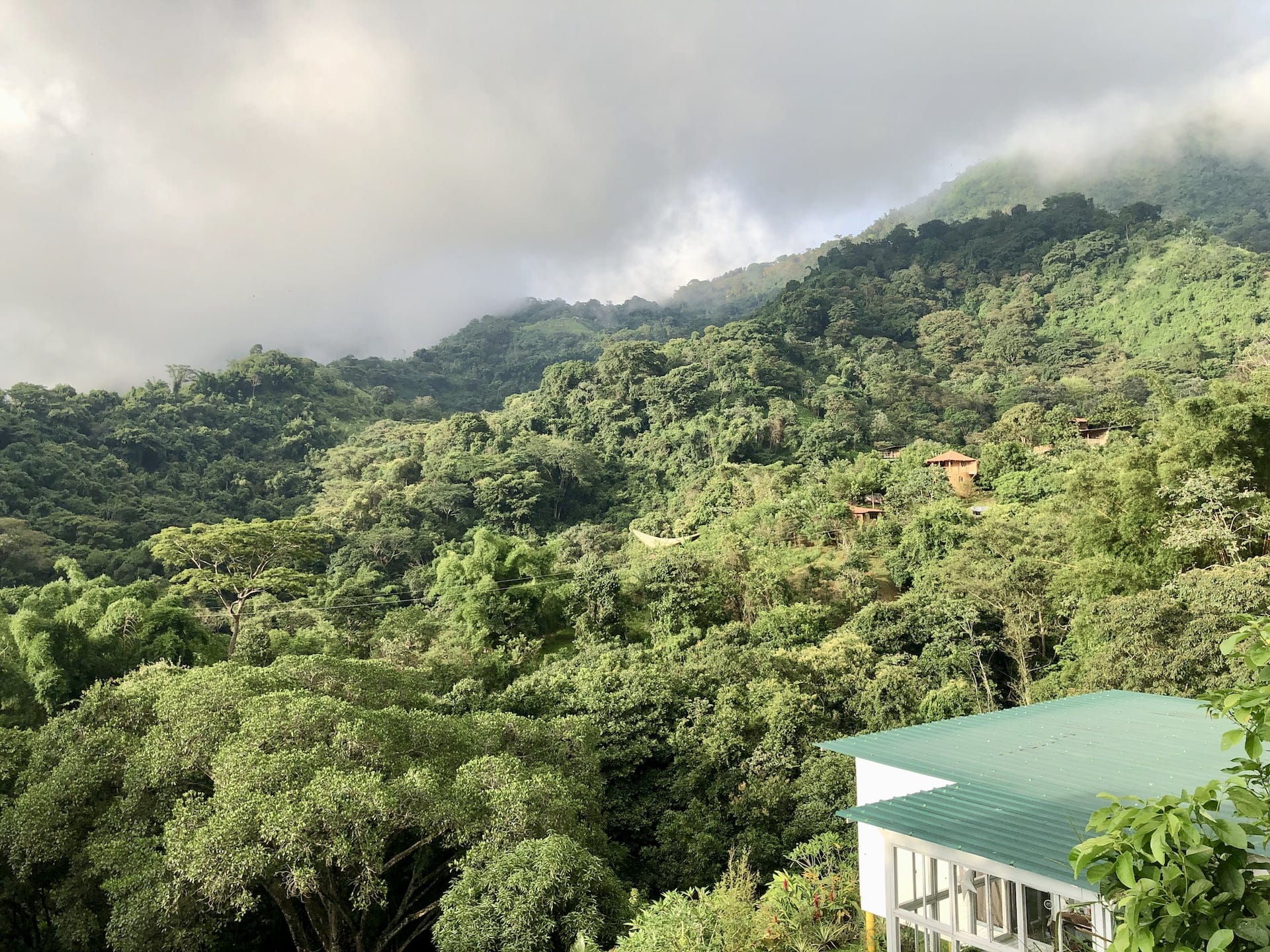
The Final Word: Is Minca Worth Your Time?
If you’re anywhere near Santa Marta or Tayrona National Park, Minca deserves at least a detour, if not a dedicated stay. Especially if you’re the type who gets excited about:
- Trading city chaos for jungle serenity
- Watching rare birds through borrowed binoculars at dawn
- Swimming in mountain pools that remind you you’re alive
- Sipping coffee literally where it grows
- Learning how chocolate goes from tree to treat
We only spent two nights here before heading to Tayrona, and let me tell you – that’s the absolute minimum. You could easily fill 4-5 days, and even a week wouldn’t be too long if you’re looking to really unwind and explore everything the area has to offer.
Remember, Minca is still very much a place in transition – balancing its growing popularity with its authentic mountain village charm. You might find fancy coffee shops next to traditional tiendas, and luxury eco-lodges sharing mountain views with simple family homes. That’s exactly what makes it special.
Whether you’re a nature enthusiast, a coffee aficionado, or just someone needing a break from the Caribbean coast’s heat and humidity (though, spoiler alert: Minca’s got its own brand of humidity), this mountain haven offers something unique. Just come prepared for adventure, ready to go with the flow, and open to whatever experiences the jungle decides to throw your way.
And who knows? Maybe you’ll even spot that legendary Minca Fly – though hopefully not too close up.
